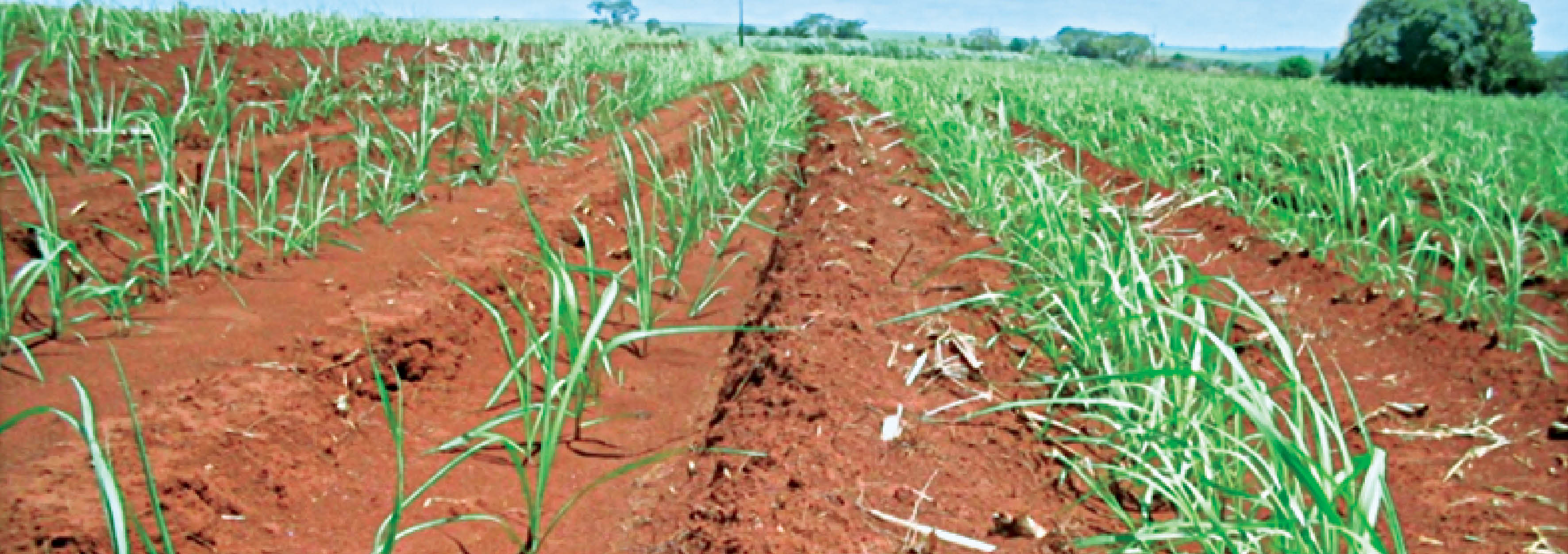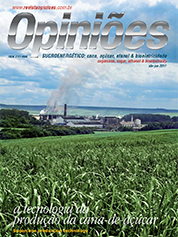Felipe Barros Macedo
Agronomy Engineer of Cane and Citrus at Stoller do Brasil
Op-AA-28
Bioregulators for sugarcane
In the world’s current agricultural scenario, the keyword is efficiency. Due to this, there is a continuous quest for productivity increases, and at the same time, for cost reductions, so that the activity is profitable. In addition, there is growing concern about reducing impact on the environment, to achieve more sustainable development. To that end, the use of new technologies is strategic, since they allow for increases in productivity and improve the use of available resources.
Nowadays, with the development of new techniques in sugarcane agriculture, quantitative and qualitative increases in production can be attained by using bioregulators. These compounds make plants more efficient, are adapted to making better use of the environment, and are better suited to express genetic potential. Average sugarcane productivity in Brazil is 80 t/ha, well below the biological production potential of approximately 300 t/ha.
This is due to climate interferences (mainly temperature, solar radiation, humidity and rainfall), the management modality used for the crop, the production environment, pests, diseases and others. These factors cause stress in the plants, which stop developing due to higher concentration of inhibitor hormones (abscisic acid).
The application of bioregulators, which supply promoter hormones (Citocinines, Gibberellines and Auxines), minimizes stress effects and brings about hormonal equilibrium. Plants that are in equilibrium can better express their potential and are totally capable of expressing their potential and developing their radicular system and the above-ground part, allowing them to reach the highest profitability in the sugarcane industry. They entail similar effects as those of plant hormones and can be directly applied to plants.
A combination of “plant hormones”, registered at the Ministry of Agriculture for the cultivation of sugarcane, which was studied in detail for this crop, showed actual increase in stalk and sugar productivity, both in the case of plant-cane and ratoons, with the product consisting of 90 mg/l of citocinine, 50 mg/l of gibberellic acid and 50 mg/l of 4-indol-3-ylbutyric acid.
It is important to point out that the registration of the bioregulator assures the user certainty as to the actual composition and efficiency, given that since it is a plant hormone, one needs to know when, how, where and mainly how much to apply. Sugarcane research results have shown that the application of this bioregulator on plant-cane, with the spray directed to the billets in the furrows, increased productivity from 6 to 21%.
On ratoons, productivity gains with stalks that received applications on leaves, in the ratoon tillering phase, varied from 8 to 25%. However, since productivity increases can only be achieved on first ratoon harvests, the use of this technology throughout the cycle becomes an important alternative to increase productivity averages of production units. Such increases are especially due to:
1. bud shooting stimuli, allowing for the reduction of errors and the increase in shooting homogeneity, which is a major concern these days in mechanical planting;
2. more intense development of the radicular system, beneficial for better exploitation of the environment and better use of water (drought tolerance), nutrients and better tolerance of the pull-off;
3. Increase in the number of tillers and stalks (where sugar is stored);
4. more homogenous sugarcane plantation, with larger diameter stalks and more uniformity in height, benefitting mechanical harvesting and the productivity of harvesting equipment.
High productivity is the final result of a complex equation that begins with the genetic potential of varieties, includes a favorable environment so that plants can produce, and ends with their capacity to exploit the environment. Adequate hormonal equilibrium, obtained by using bioregulators, defines plant efficiency in making use of such available resources.





